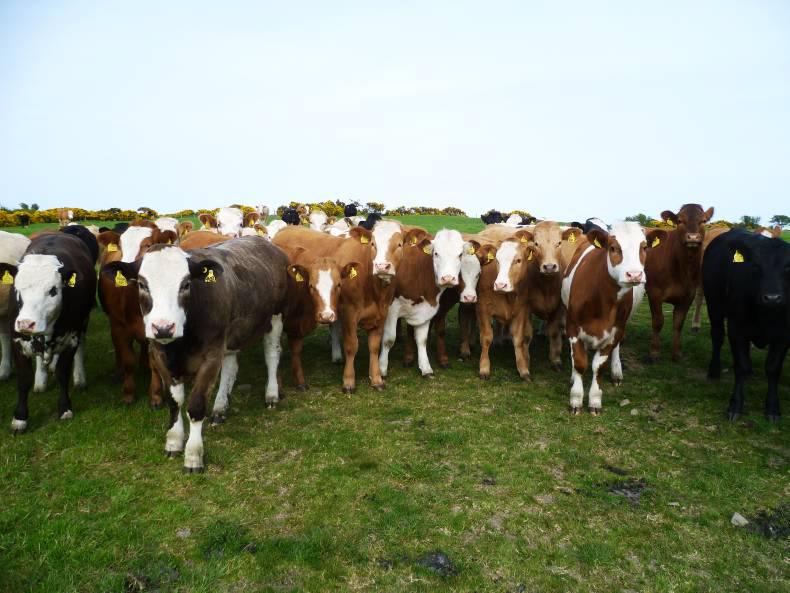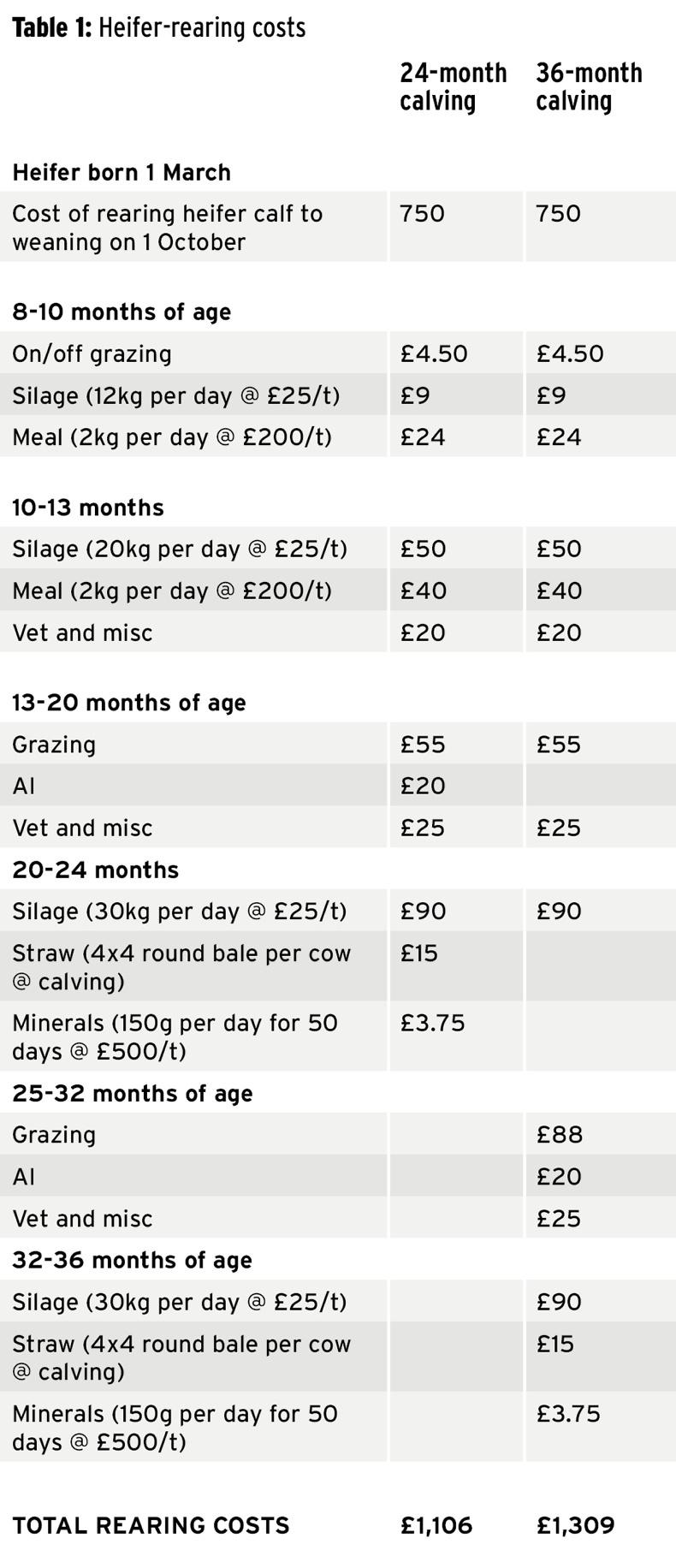
LOYALTY CODE:
The paper code cannot be redeemed when browsing in private/incognito mode. Please go to a normal browser window and enter the code there

LOYALTY CODE:
The paper code cannot be redeemed when browsing in private/incognito mode. Please go to a normal browser window and enter the code there
This content is copyright protected!
However, if you would like to share the information in this article, you may use the headline, summary and link below:
Title: Getting to grips with rearing suckler replacements
Kieran Mailey outlines the management required to successfully calve suckler-bred heifers at 24 months rather than 36 months of age.
https://www.farmersjournal.ie/getting-to-grips-with-rearing-suckler-replacements-337072

ENTER YOUR LOYALTY CODE:
The reader loyalty code gives you full access to the site from when you enter it until the following Wednesday at 9pm. Find your unique code on the back page of Irish Country Living every week.

CODE ACCEPTED

You have full access to farmersjournal.ie on this browser until 9pm next Wednesday. Thank you for buying the paper and using the code.

CODE NOT VALID
Please try again or contact us.
For assistance, call 01 4199525
or email subs@farmersjournal.ie
Sign in

Incorrect details
Please try again or reset password
If would like to speak to a member of
our team, please call us on 01-4199525
Reset
password
Please enter your email address and we
will send you a link to reset your password

If would like to speak to a member of
our team, please call us on 01-4199525
Link sent to
your email
address
![]()
We have sent an email to your address.
Please click on the link in this email to reset
your password. If you can't find it in your inbox,
please check your spam folder. If you can't
find the email, please call us on 01-4199525.
![]()
Email address
not recognised
There is no subscription associated with this email
address. To read our subscriber-only content.
please subscribe or use the reader loyalty code.
If would like to speak to a member of
our team, please call us on 01-4199525
 This is a subscriber-only article
This is a subscriber-only article
Update Success !

Slightly over 20% of suckler-bred replacements calve at 24 months of age, with the majority calving at 30 to 36 months, and an overall industry average at 31 months.
However, calving heifers at 24 months of age is by far the most profitable option when breeding your own replacements.
A key reason for calving heifers at an older age is that it can be difficult to get heifers that calved at 24 months of age back in-calf.
The problem usually comes down to having heifers that are not fully developed at calving time.
These animals come under stress post-calving as they struggle to cope with the physical demands placed on the animal during early lactation.
The end result is that heifers are slower to come back in heat and conception rates are poor.
Stunted
Other reasons cited by farmers for calving at a later stage include avoiding animals becoming stunted by calving at 24 months.
In the case where a heifer is below the optimum breeding and calving weight, then there is a higher risk of the animal failing to reach an expected mature weight.
But where heifers meet their target weights, then there is no negative effect on mature cow size from calving at 24 months of age.
Target weights
Key to overcoming these problems and getting heifers to calve successfully at 24 months of age is to meet target weights.
These include:
Good management is crucial, especially during the first winter. Weanling heifers should be run as a separate group for priority management, thereby increasing the chance to reach the target breeding weight at 15 months of age.
If the average cow weight is 700kg, then heifers should weigh a minimum of 420kg when put to the bull.
Meeting this target should be realistic for most farms. At 15 months, the heifer is 450 days old.
As the calf starts with a birth weight of 40kg to 45kg, the animal needs to gain around 380kg of liveweight over the next 450 days. This is a daily gain of 0.85kg/day from birth.
Taking a March-born heifer calf weaned and housed at 270kg, it needs to gain around 0.6kg/day during the winter housing period.
Over a 200-day winter and allowing for 30 days with no gain post-weaning, the heifer should weigh 370kg when turned out to grass next spring. This leaves around 50kg of weight gain required from grass before breeding.
Priority
Separating replacement heifers from other weanlings means that they can be fed accordingly.
Heifers should be eating high-quality silage, plus 1kg to 2kg of concentrate, depending on the feed value of the forage.
If heifers are currently below their target weight, then you should up their concentrate levels by 0.5kg to 1kg/day.
But, be careful that heifers do not become fat, as this will reduce weight gains from grass at turnout.
Replacement heifers should be one of the first groups of cattle to go back to grass in spring.
This gives them time to settle and adjust to the change in diet.
Having a longer spring grazing period will increase the chance of heifers meeting their breeding target and going in-calf.
Calving weight
Getting heifers to calve down at approximately 90% (or higher) of mature cow weight means they are better equipped to cope with the stress of calving and early lactation.
Taking the average cow weight at 700kg, this means heifers should be calving down around 630kg by 24 months of age.
This converts to a lifetime gain of 0.8kg/day which is a realistic weight gain for suckler-bred cattle.
If the heifer was served at 420kg, then it has to gain 210kg over the next nine months which is a daily gain of 0.77kg/day.
Again, heifers should be kept as a separate group and offered top-quality grazing and silage during the winter to maintain performance.
Costs of rearing replacement heifers
What does it cost to rear suckler replacements from within your own herd? While a monetary value can be put on rearing costs, there are other aspects of rearing homebred replacements that are much harder to put a value on.
These include knowing the herd health status, knowing the genetic background of replacement heifers, temperament and the maternal ability of the heifer’s dam.

Table 1 outlines the typical costs involved for a spring-calving herd in rearing heifers to calve at 24 months of age, compared with 36 months of age.
The example is based on a March-born heifer calf being reared on farm to calve at either of the respective ages.
A starting cost of £750 is assumed, and covers the cost of keeping the cow and calf from birth to weaning on 1 October.
As shown in Table 1, it takes £200 per head less to rear heifers and calve them at 24 months of age compared with calving at 36 months of age.
Additional replacements
It is also worth noting that with 36-month old calving, there is an additional group of replacements to be housed and grazed, complicating herd management, and while the older heifer is still eating into profits, the 24-month calving heifer has a weanling on the ground.
The example is also a good reference point to consider the merits of buying in replacements compared to home-bred animals.
SHARING OPTIONS: